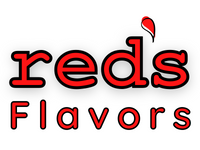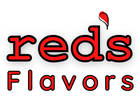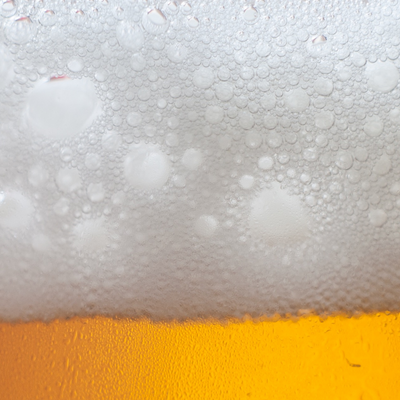What Sweetener Should I Use?
The sweetener being used in any beverage is necessary to bring out the best aspects of the flavor. Each sweetener variety can and will affect the flavor profile. The type of sweetener in each beverage depends on a multitude of reasons, including but not limited to cost, calories, natural labeling requirements, and consumers’ preferences.
The gold standard for sweetness is beet or cane sugar. No other sweetener has the perfect balance of beginning and ending sweetness as sugar, making it highlight every flavor in the best possible way. Sugar is readily available and reasonably cost-effective. Recently the FDA has updated how sugars are required to be labeled on nutritional facts. These include a section for “added sugars” on beverages, with a Recommended Daily Allowance (RDA) of 50 grams of added sugars. Each gram of sugar is 4 calories. The average consumption of a 20 oz sugar-sweetened carbonated beverage could contain 260 calories, 65 grams of sugar, or 130% of added sugar.
We use sugar as the scale of what other sweeteners correlate to it in comparison in usage. For example, these are the comparisons of sweeteners to Sugar.
|
Sweetener |
Origin |
Sweetness |
Calories per gram |
|
Sugar |
Natural |
1 |
4 |
|
High Fructose Corn Syrup 42 (71 Brix) |
Natural |
0.9-1 |
3.7-3.8 |
|
Dextrose |
Natural |
0.6 |
3.6-3.7 |
|
Honey |
Natural |
0.9-1 |
3-3.05 |
|
Agave Nectar |
Natural |
1-1.5 |
3-3.1 |
|
Molasses |
Natural |
0.6-0.7 |
2.9 |
|
Sucralose |
Artificial |
600 |
0 |
|
Acesulfame Potassium |
Artificial |
200 |
0 |
|
Aspartame |
Artificial |
200 |
0 |
|
Stevia |
Natural |
200-300 |
0 |

High Fructose Corn Syrup
High Fructose Corn Syrup is the closest to sugar in sweetness. It is used in the United States more than sugar for beverages since it is more cost-effective. It does have some lacking sweetness compared to sugar, but the cost usually outweighs the negative. The cost is why most major beverage brands use it compared to sugar. Since most of our customers are not engaged in soda wars, we recommend sticking to sugar for most beverages instead, as it creates a higher craft appeal and a better overall differential taste and consumer appearance from the cheaper categories.
Other caloric sweeteners include juices, agave syrup, honey, and maple syrup. Agave, honey, and maple syrup are expensive and are usually cost-prohibitive for beverages, which is why we don’t see beverages with these sweeteners on store shelves. When we do see them, they are flavor additives, i.e., Lemon Sweet Tea with Honey. There is a great benefit to using these in small amounts for flavor enhancement. Juices need a juice HCAAP program approved through the FDA as juice beverages produced incorrectly can be fatal to consumers, therefore, we are leaving juices out of the equation, “See Stop, Cease and Desist.”
Caloric vs. Non-Caloric
This is when things get difficult for beverage developers. Both sugar and HFCS are very good sweeteners from a taste perspective with a great balance of sweetness and no bitterness. Both are high caloric making them a great choice in moderation but other customers are cutting back in calories and are seeking alternatives to these high caloric sugar products.
Formulating with sugar is easy. Formulating with a sugar substitute to have consumers perceive it as sugar, is extremely difficult.
Non-caloric high-intensity sweeteners used in beverages include, but are not limited to, sucralose, acesulfame potassium, aspartame, and stevia.
Sucralose is shelf stable and cheap. This makes it a great sweetener. In the overall profile, it is close to sugar. It is the highest intensity for sugar-free sweeteners, roughly 600 times sweeter than sugar. It is very cost-effective. In most cases, it is far cheaper than comparable sugar-sweetened beverages. It is important to weigh this product carefully and precisely since it can easily be over-sweeten and ruin a production batch.
Our opinion is that a blend of sucralose and acesulfame potassium is the most balanced sweetness that is representative of the same sweetness of sugar. Variations of the blend of sucralose and acesulfame potassium can work for different beverage applications, so some testing is needed. Not every beverage fits into this category due to labeling constraints or personal preference, which is what makes beverage development a love of trial and error.
|
|
Sugar |
Sucralose 600x |
Acesulfame Potassium 200x |
|
90/10
|
500 pounds |
90% - 0.75 pounds (450 pounds sugar) |
10% - 0.25 pounds(50 pounds sugar) |
|
80/20 |
500 pounds |
80% -0.666 lbs (400 pounds of sugar) |
20% -0.5 lbs (100 pounds of sugar) |
|
75/25 |
500 pounds |
75% -0.625 lbs (375 pounds of sugar) |
25% -0.625 lbs (125 pounds of sugar) |
|
60/40 |
500 pounds |
60% -0.5 lbs (300 pounds of sugar) |
40% -1.0 lbs (200 pounds of sugar) |
Aspartame will degrade in liquid and therefore makes it difficult to use in a shelf-stable beverage for 12 months. The damage that can be made when a consumer pops the cap 12 months in and doesn’t get the sweetness, reduces the overall appeal unless inventory can be tightly controlled. Three to six-month shelf life is expected and would be acceptable for the usage of aspartame.
Stevia is the only sweetener on this list that is considered natural. For marketing purposes, most stevia beverages appear as a great natural zero-calorie choice. However, stevia extracts don’t have a balanced sweetness perception, as it has a bitter aftertaste. To offset the bitterness and compliment the stevia extract, zero-calorie alcohol sweeteners are combined to balance the beverage. Erythritol at 4-8 grams per 8 ounces of beverage can offer a better sweetness blend. The benefit is a zero-calorie beverage can make these beverages premium to the right consumer, but this can be a smaller subset target market. It can be a niche product for the right market, as it is a natural form of zero-calorie sweetener and by far the best in the marketplace.
Whatever sweetener you decide on, it is one of the pivotal pieces of the beverage. But you don’t need to be limited to one. Most brands have many versions and continue to evolve new lines. Overall, the general feeling for beverages is a reduction in overall sweetness. As in all things, the key is moderation and for the best tasting product, sugar is king. Your brand doesn’t have to be tied to one sweetener and can include one or many kinds of sweeteners.
This information is intended to demonstrate the use of our flavor only and is for investigative use only. The final customer and or user needs to verify the final application. We cannot anticipate all conditions under which this information and our products or the products of other manufacturers in combination with our products may be used. We accept no responsibility for results obtained by the application of this information or the safety and suitability of our products alone or in combination with other products.









Leave a comment